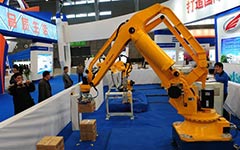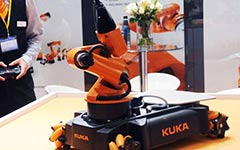As a manufacturing center, Guangzhou is embracing the increasing demand for robots with rising labor costs and a shortage of workers, according to He Zaihua, a researcher with market research firm CI Consulting.
The industrial robot industry of Guangzhou consists mainly of robot body manufacturing, relying on imports for controlling systems, motors and decelerators, He said, adding that the city work to develop the latter three areas to raise the overall quality of the industry.
|
 |
|
 |
|
 |
The city government plans to build two or three robot industrial parks and have one or two key companies with their own brands and proprietary intellectual property rights generating annual output of 10 billion yuan each.
It pledged to work to promote the application of industrial robots in various sectors and to enhance policy support in terms of capital, land use and human resources.
Jiang of GSK CNC Equipment Co believes the sector could benefit from the government's plan for a larger market, availability of more land and some financial support.
Besides better policies for drawing technology and talent and fund-raising, across-the-board platform serving companies in the industry, like the alliance for industrial robot manufacturing and application set up in Guangzhou in September last year, is also necessary, he said.
Robots made by domestic firms will gain a competitive edge in pricing, which will be half or even one-third of their foreign counterparts, He said.
He sees bright prospects for localizing industrial robots, which will be driven by technological and product upgrading.
Challenges to domestic companies will include the reliability, practicality and market recognition of their products, said Jiang, adding that they must differentiate their market positioning.
Jiang's company has been allocating 8 to 10 percent of its revenue to research and development, with about 300 staffers engaged in robot development.
As enthusiasm continues to build, Jiang suggested that a cool head must be maintained over the industry to prevent speculative investment and future oversupply, with which he agreed.
The guideline from the Ministry of Industry and Information Technology pledges to guide local authorities in rationally identifying the mode and scale of the robot industry's development and to promote differentiating development among localities.
